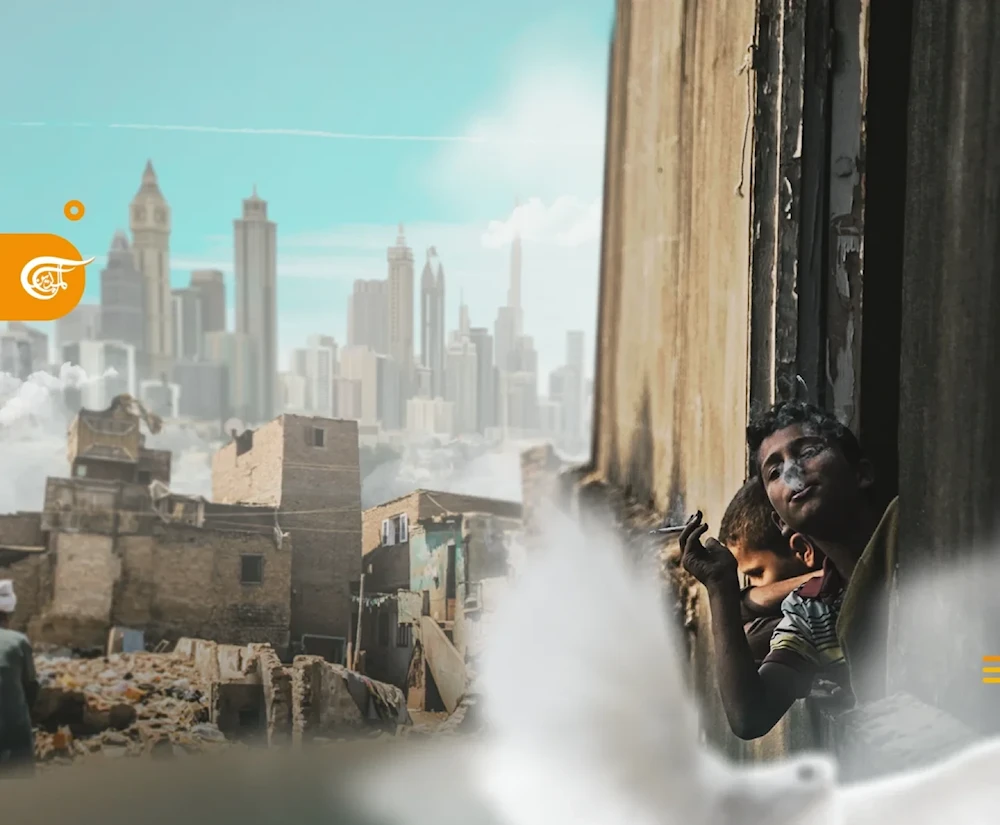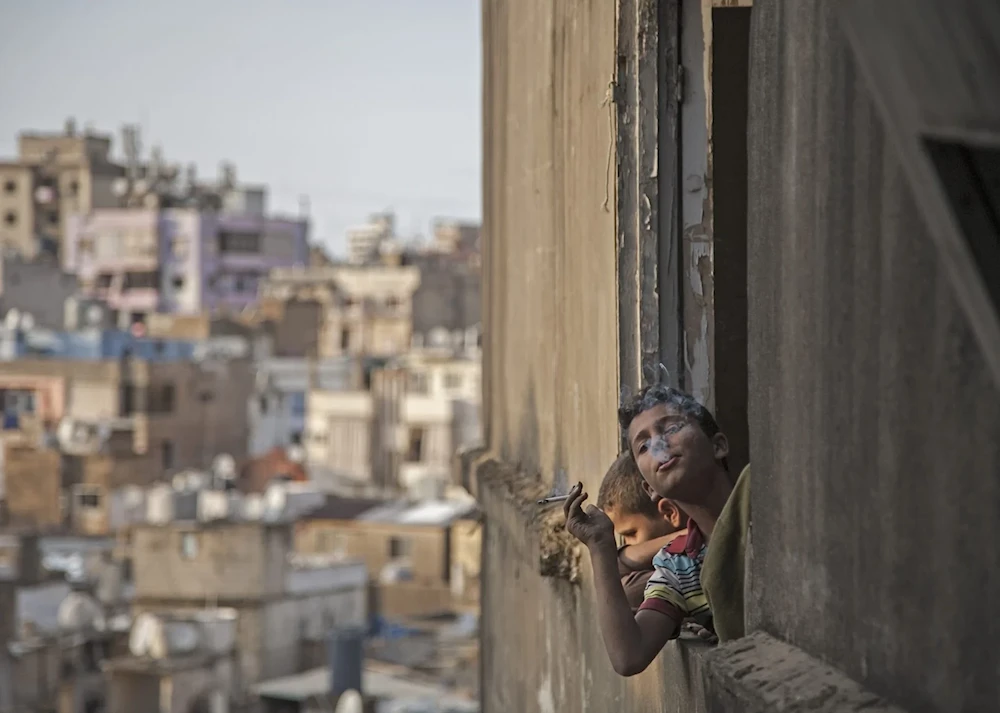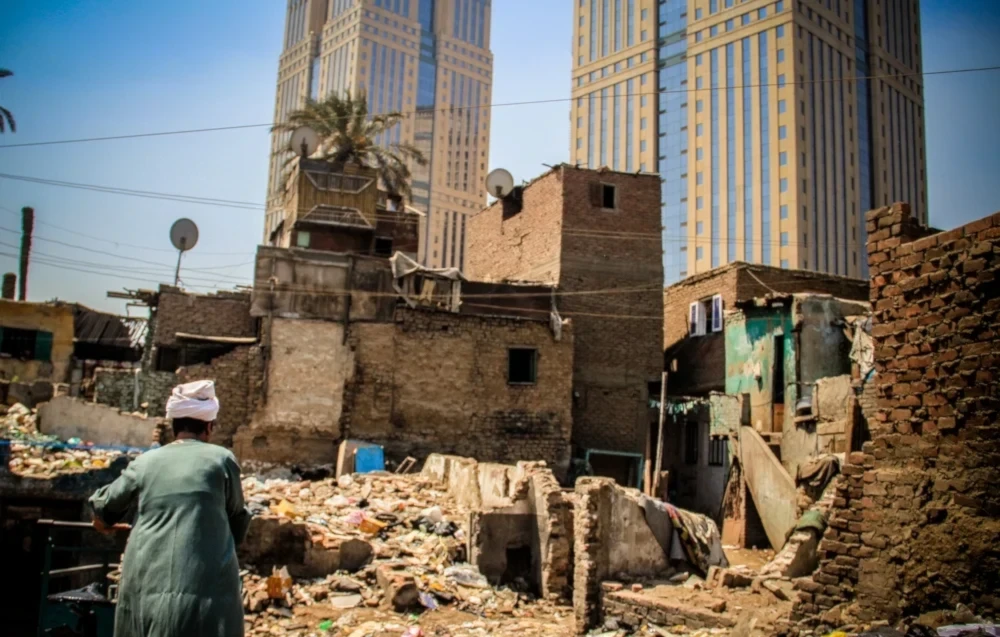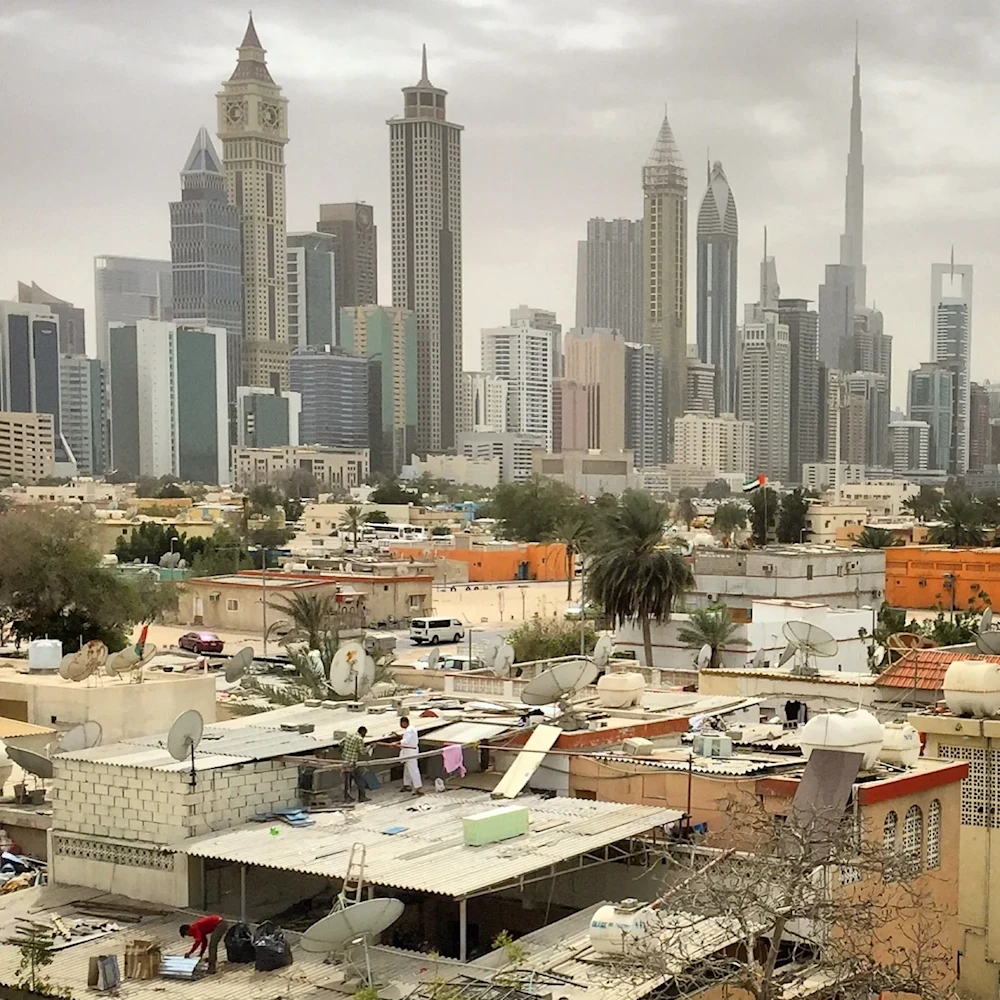Post-colonial neoliberalism is reshaping Arab cities one by one
Arab cities today stand at a critical crossroads, shaped by the legacies of colonialism, the forces of neoliberalism, and ongoing struggles over identity, power, and space.
-

Post-colonial neoliberalism is reshaping Arab cities one by one
In Death in Beirut, the late Lebanese writer Tawfiq Yusuf Awwad (1911–1989) portrays a city being consumed by its contradictions, a place where dreams of change crash against the walls of corruption and sectarianism, turning Beirut into a battleground between the old and the new. It is a struggle between those clinging to memory and those seeking to reshape it to serve the interests of capital.
Beirut, in Awwad’s novel, is not merely a site of political unrest; it becomes a testing ground for profound urban and economic transformations, an early example of what would later unfold in other Arab cities. Change no longer stems solely from political conflict, but also from the growing dominance of market logic and private investment.
As in the Egyptian writer Sonallah Ibrahim’s "Beirut, Beirut" the city appears as one gradually losing its socially diverse fabric. Old neighborhoods are replaced by massive real estate projects, and the heart of the city is reconfigured to serve the interests of a narrow economic elite.
This neoliberal reimagining of Beirut in the aftermath of the Lebanese Civil War was no anomaly. It was part of a broader shift across Arab cities, where capitals like Cairo, Tunis, and Casablanca have undergone similar urban restructuring, reshaping the cityscape in ways that isolate the wealthy from the poor, essentially turning the city into little more than a tool of real estate capitalism.
Meanwhile, cities like Dubai, Doha, and Riyadh are rapidly rising, but not as organic extensions of society and history. Rather, they emerge as architectural products designed according to pure economic logic. Towering skyscrapers and sprawling commercial complexes become symbols of transnational capital, not of urban life rooted in a layered social and cultural context.
These shifts mark a fundamental transformation in the political economy of the Arab city. The city is no longer an organic space for social life. Instead, it is being reshaped to serve the interests of capital and ruling elites. Are we witnessing the dawn of a new urban reality, where historic cities are erased in favor of global financial hubs? Or do the old capitals still have the power to resist, despite the growing threats to reduce them to mere commodities in the global market?
The postcolonial Arab city: Conflicts of memory, hybrid identities
In the postcolonial era, Arab cities underwent fundamental transformations that were not merely a break from the colonial past, but rather complex responses to a web of political, economic, and social forces that reshaped their urban forms and collective identities.
Political independence alone was not enough to liberate these cities from the lingering influence of colonial powers. Instead, many reconstituted themselves within new frameworks of dependency. Political and economic elites continued to exploit the remnants of colonialism through dynamics of what Cameroonian philosopher and political theorist Achille Mbembe calls "internal colonization," a concept central to his analysis of the postcolonial condition.
Within this context, the postcolonial Arab city became a contested space, a battleground between traditional forces seeking to preserve existing centers of power and emerging actors attempting to redefine their relationship with modernity and globalization.
This tension was not merely ideological; it was embedded in the very fabric of urban development. Unlike the European experience, where urbanization was largely driven by industrialization, many modern Arab cities emerged without a cohesive industrial base.
In the Arab world, urban transformation was propelled less by manufacturing and more by financial flows, large-scale infrastructure investments, and the administrative expansion of the state. This led to cities that grew rapidly but lacked the economic foundations necessary to become self-sustaining centers of production.
As a result, a kind of hybrid urban identity emerged, one in which elements of the colonial past blended with imported models of modernity, yet without enabling populations to develop a homegrown version of modernity. This has turned Arab cities into spaces where deep social contradictions are reproduced: between modern neighborhoods and informal settlements, between centers of power and marginalized peripheries, between official visions of modernity and grassroots interpretations of it.
This struggle over identity is inscribed in the city’s very form: in its architecture, wealth distribution, social relations, and even its cultural narratives, which continue to invoke the colonial past as a dominant force in shaping urban consciousness.
Indian writer and critic Pankaj Mishra, in his reflections on the postcolonial world, highlights how societies often resist externally imposed forms of modernity, turning "modernity" itself into a contested project imposed from the outside, though shaped internally in unpredictable ways.
Arab cities today reflect this very tension. They aspire toward modernity while simultaneously reproducing traditional structures of power, economic inequality, and social hierarchy. As a result, they are in a perpetual state of transformation without ever achieving a true rupture with their past.
This stands in contrast to European cities or certain Asian metropolises, where urban expansion was typically tied to industrial development. In the Arab world, the colonial era entrenched extractive economic models focused on raw material export, which is a pattern that remained even after independence. As a result, most Arab economies remained tethered to global markets through a logic of dependency, preventing the emergence of industrial cities capable of generating autonomous economic momentum.
Consequently, urbanization was driven by other factors, most notably among which was rural migration in search of work and services and state policies that prioritized large infrastructure projects over building productive economic bases. This made Arab cities highly fragmented spaces, where upscale neighborhoods coexist alongside informal settlements, and where diverse ways of life mirror stark social inequalities.
In this way, Arab cities have become arenas where multiple identities are tested and negotiated. The question is no longer how to overcome the colonial legacy, but rather how to construct an urban model capable of achieving cultural and economic independence in a rapidly changing world.
Cities, after all, are not just clusters of people and buildings. Instead, they serve as reflections of power structures, social relations, and development paths that ultimately shape the future of entire societies. To understand Arab cities today, we must analyze the power dynamics that govern them and uncover the mechanisms of domination that still persis — evident in ongoing class divisions, urban disparities, and identity tensions. These cities remain dynamic and full of potential; however, they also remain constrained by legacies of colonialism and the limitations of postcolonial governance.
The right to the city between political control and the absence of democracy
In the Arab context, discussions of the “right to the city” often reveal a fraught relationship between urban space and political authority, a relationship which is marked by both containment and repression, by cultural production and censorship, and by the tension between closed-off spaces and open margins.
As French sociologist and urban theorist Henri Lefebvre argued, the city is not merely a built environment, but a space for producing meaning, reshaping the public sphere, and enabling political participation. From this perspective, major Arab cities such as Cairo and Beirut offer two contrasting experiences in how urban space intersects with power and cultural life.
Cairo, for example, stands as a model of a city that fostered cultural modernity in the Arab world but within the bounds of authoritarian control. Since the 20th century, it has been a hub for publishing, cinema, theater, and influential intellectual movements. Yet, it has simultaneously remained under the watchful eye of state censorship.
This paradox turned Cairo into a city that generated ideas without granting them full freedom of movement, which created what might be called a "besieged culture," where creativity was tolerated only so long as it did not cross the political and social red lines drawn by those in power.
This contradiction between cultural vitality and political repression can be understood through Lefebvre’s concept of the “right to the city,” where urban space is not only a site of social life but also a tool of political control. In Cairo, the public sphere was never freely accessible. It was consistently shaped by state interventions, be it through direct censorship of the press, theater, and film, or through the more subtle influence of ruling elites over cultural institutions.
By contrast, Beirut offered a different model. It became a refuge for Arab intellectuals fleeing repressive regimes in Egypt, Syria, Iraq, Libya, and elsewhere. From the mid-20th century onward, Beirut was the city where journalists, thinkers, and writers could find the freedom of expression they were denied in their home countries.
In the 1950s and 1960s, Beirut was home to publishing houses like Dar al-Adab (The House of Literature) and Dar al-Tali‘a (The House of the Vanguard), which helped disseminate leftist and liberationist ideas that were largely banned in most Arab capitals. It also hosted newspapers and magazines such as Al-Adab, Al-Hawadeth, and As-Safir, which became platforms for critical thought and political debate that could not exist under the tight grip of censorship in other parts of the region.
But Beirut’s openness was not born out of genuine democracy. It stemmed from political fragmentation and the Lebanese state’s inability to monopolize power, unlike the centralized regimes elsewhere in the Arab world. Because of its sectarian divisions and weak state apparatus, Beirut was not under the control of a single authoritarian regime, which, paradoxically, created limited yet fragile spaces of relative freedom, always at risk of sectarian violence and political instability.
With the outbreak of the Lebanese Civil War, Beirut’s relationship to freedom took an unexpected turn. While war typically extinguishes democratic spaces, the conflict in Beirut created a unique paradox: as the state collapsed, certain areas became zones of expression free from centralized censorship. Despite the devastation, the war opened pockets of freedom that were unimaginable in the police states governing much of the Arab world.
This allowed Beirut to continue hosting exiled intellectuals even during wartime. Neighborhoods like Hamra and Raoucheh remained spaces where political and intellectual discussions, which were otherwise banned elsewhere, could still flourish. In this way, Beirut became what might be called a “refuge city,” offering a haven for Arab dissidents and thinkers to continue publishing, debating, and engaging in intellectual life in cafés and cultural centers.
If Henri Lefebvre viewed the “right to the city” as the right to reshape urban life according to the needs of its inhabitants, then Arab cities have yet to realize this ideal. Beirut may have served as a temporary haven for intellectuals, but it never evolved into a sustainable democratic model, remaining largely plagued by instability. Cairo, for all its rich cultural history, never became a truly open city either, long held captive by the logic of authoritarian rule that tightly manages and controls public space.
This brings us to the analysis of British Marxist geographer David Harvey, who argues that the “right to the city” is not just about access to urban space, but about the power to reshape it in accordance with the interests of diverse social groups, not merely the political and economic elites.
Harvey maintains that the city becomes a mechanism for producing power and entrenching social inequalities. Urban space is allocated based on the logic of capitalism and political dominance, marginalizing those who lack the means to assert their presence in the public realm.
From this perspective, Arab cities can be seen less as democratic arenas and more as instruments of control. Urban spaces in Cairo, Beirut, and other Arab capitals have often been deployed to advance the interests of ruling regimes either through policies that manage public space or through urban development projects designed to benefit specific social classes. Yet despite these constraints, as Harvey suggests, the Arab city remains a space of potential transformation. The struggle for the “right to the city” does not only serve as a call for freedom but also as a demand to redistribute power within the urban landscape itself.
The Arab uprisings and the protests that swept through several capitals serve as evidence that urban space is still a contested terrain between the state and society. Social movements are attempting to redefine their relationship to the city and claim their rights within the public sphere.
From this standpoint, the “right to the city,” as Harvey envisions it, is not merely a cultural or political demand. It is a social struggle which aims to reshape the urban environment in ways that serve the aspirations of the broader population, not just the interests of the ruling elite.
A close reading of the transformations in Arab cities, from Beirut, torn between sectarian memory and neoliberal projects, to Dubai, growing as a globalized architectural product, reveals the fragility of the balance between modernization and alienation, between urban development and the erasure of social character, between reconstruction and the fragmentation of identity.
A path toward an alternative Arab city?
The modern Arab city is no longer merely a built environment or a demographic container. It has become an open arena for complex struggles, where security policies intersect with investment logic, and where individual aspirations are compressed into an uneven battle with entrenched structures of power and domination.
Since the 1990s, neoliberalism has produced a model of the Arab city that at first glance appears to emulate global urban trends. Yet behind the skyscrapers and mega-projects lies a deep social fragility, a juxtaposition of luxury and marginalization, where poverty is reproduced at the very heart of urban expansion.
In many Gulf states, these cities were not the result of a layered historical or cultural process. Instead, they were designed as exhibition spaces for global capital, built upon strict security foundations and urban planning strategies that exclude the obscured classes from the public realm.
Urban space is no longer generated from within, but imported as a ready-made blueprint that is planted with symbols of globalization, from luxury shopping malls to "safe zones," all in near-total disconnect from the local social fabric.
In contrast, older cities such as Cairo, Damascus, and Beirut appear as fractured sites still burdened by their colonial pasts, reconstituting themselves within incomplete frameworks of modernization.
The outskirts of Cairo, for example, have witnessed the emergence of informal urbanization beyond the state’s direct planning. But these spaces were not fully detached from the state. Instead, they existed in constant interaction with its administrative and security apparatuses. The state's presence was felt not just in laws or policies, but in daily negotiations between residents and authorities embodied in the local policeman, the municipal employee, or networks of patronage. This daily presence of the state reshaped the relationship between citizens and the city through flexible forms of control and negotiation.
This complex relationship between urban dwellers and the state raises deeper questions about what the “right to the city” really means. In its modern conception, the city should be a space for shared living, cultural production, political participation, and social justice. Yet this right remains absent or incomplete in the Arab experience. Cairo, despite its rich cultural traditions, remains captive to the authoritarian state, which defines and limits the public sphere, allowing only state-sanctioned culture while repressing free expression.
Beirut, for its part, despite its relative historical openness, relied more on a power vacuum than on genuine democracy. Its freedoms were fragile, always at risk from sectarian rupture or the whims of speculative capital.
Between these two models, the Arab city emerges as a contested space where state, market, and society intersect without any one actor achieving full dominance. Indeed, the city has become a testing ground for deeper transformations: of power, identity, and economics. In cities that experienced uprisings and protests such as Tunis and Cairo, a new generation of urban actors has emerged, not necessarily organized into traditional political movements, but formed through cultural initiatives, housing demands, public space occupations, and quiet resistance to the symbols of marginalization.
These experiences have shown that urban space is not only a stage for displaying authoritarian power or neoliberal spectacle, it is also a site of negotiation, struggle, and reimagining. Even in marginalized zones excluded from formal systems of production, alternative forms of life, social organization, and meaning are constantly being generated.
Though often unrecognized by official frameworks, these spaces reflect the possibility of another kind of city which is not reduced to its superstructures, but which emerges from the grassroots, built daily by its inhabitants.
Thus, the real challenge today is not only to critique the models of the “neoliberal city” or the “security city,” but to imagine an alternative Arab city: a city built for its people, not for the market; a city where life is created, difference is respected, and public spaces are opened for participation, not surveillance. A city that honors its memory without becoming imprisoned by it, and that moves toward the future without severing ties with its social foundations. This requires a rethinking of urban policy, the role of the state, and the place of the social actor in shaping the city.
Ultimately, the city is not merely a physical structure but rather a mirror of social relations, a reflection of power dynamics, and an expression of hope or exclusion. The right to the city, as theorized by Lefebvre and Harvey, is not a decorative or cultural demand. No, it is a daily struggle for the redistribution of power, opportunity, and meaning. And perhaps here, in this daily imagination and quiet resistance, lie the seeds of the next Arab city.
Sources and References
- Lefebvre, Henri. The Right to the City. Trans. Dr. Fouad Shahin, Arab Cultural Center, 2010 (original French edition, 1968).
- Harvey, David. Rebel Cities: From the Right to the City to the Urban Revolution. Trans. Mazen Al-Sayed, Believers Without Borders, 2012.
- Mbembe, Achille. On the Postcolony. University of California Press, 2001.
- Bayat, Asef. Life as Politics: How Ordinary People Change the Middle East. Stanford University Press, 2012.
- Denis, Eric & Séjourné, Marie. La ville arabe en transition: mutations urbaines et changements sociaux. CNRS Éditions, 2013.
- Deboulet, Agnès. "Neoliberal Urban Policies and Local Resistance in Arab Cities." L'Année du Maghreb, no. X, 2014.
- Sassen, Saskia. The Global City: New York, London, Tokyo. Princeton University Press, 2001.
- Ismail, Salwa. Political Life in Cairo's New Quarters: Encountering the Everyday State. University of Minnesota Press, 2006.

 17 Min Read
17 Min Read













